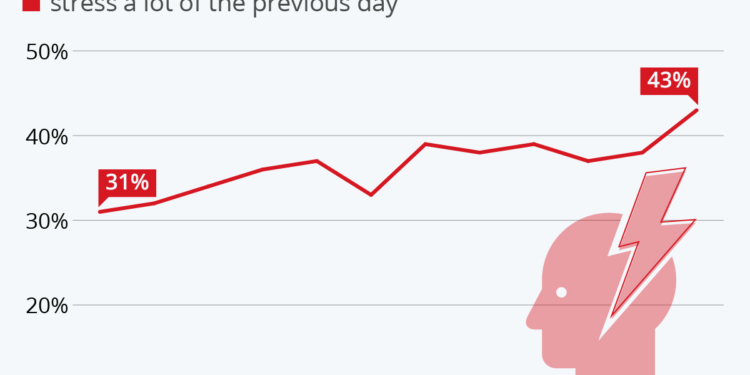Novo Nordisk Has Goals To Cut Workplace Stress. Here’s How It Plans To Achieve It
“I don’t think you could run a company if more than 10% of your employees are suffering from stress,” says Novo Nordisk CEO, Lars Fruergaard Jørgensen.
The healthcare company is looking to cut the number of people in its workforce suffering from stress.
Around 14% of its 64,000-plus employees reported symptoms of stress last year, and the company has set a target of reducing that. With every passing year, the organization aims to reduce its number of stressed workers by 10%.
A “well-designed psychosocial working environment” is necessary for people to perform well in their jobs, as well as ensure their good mental wellbeing, the company believes. And while work-related stress is an occupational risk, it is also companies’ responsibility to manage stress and workplace wellbeing.
“We acknowledge that we see stress in the organization, but we also see it as a risk for working for us,” says Nadia El-Salanti, Organizational Psychologist at Novo Nordisk. “Work-related stress is linked to people being very ambitious … Having the ability to attract very talented and highly ambitious people into a very ambitious company can create a toxic cocktail because there is a risk of people becoming so engaged and so committed to our very compelling purpose that they might compromise their own mental health and wellbeing, in order to perform and deliver.”
Stress is a problem the world over. With over 1.3 billion formal workers globally, the World Economic Forum’s Healthy Workforces Initiative aims to share best practices and help organizations and communities prioritize and advance physical and mental health in the workplace.

Stress among employees has been on the rise over the past decade.Image: Statista
Monitoring for improvement
Establishing a baseline has been an important first step in making progress at Novo Nordisk. Employees are asked about their levels of stress-symptoms in annual surveys, including how long they have felt stress and whether it can be attributed to work life, home life or a combination of the two.
Ten years ago, over a fifth of employees reported symptoms of stress. With the exception of a small peak when COVID hit in 2020, this number has fallen consistently until reaching a plateau of 14% for the past three years. Over this time, El-Salanti says, the company has grown significantly and also been under pressure to deliver and expand the product portfolio. She takes the fact that this has not resulted in increased stress as a sign the company is doing something right, but wants to continue to make progress on bringing down stress levels.
This has been achieved through a multi-pronged approach that involves engagement, understanding and training across senior management, line managers and HR. In addition, employees need to be supported in developing strategies to prevent stress and build resilience.








